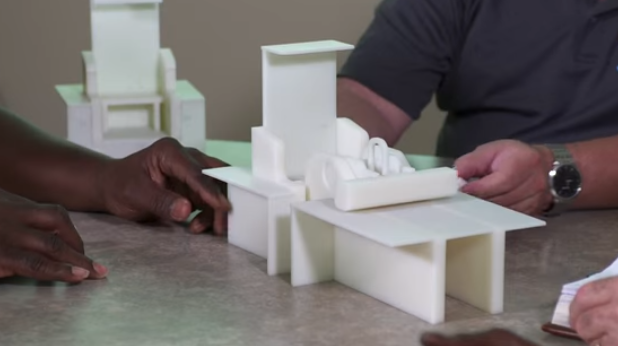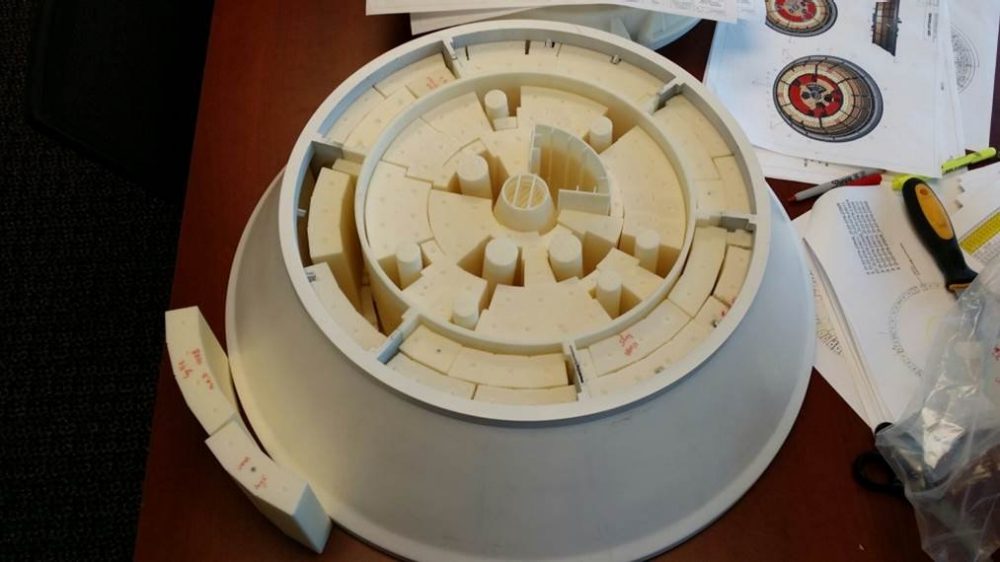Gulf of Mexico: Shell Uses 3D Printed Prototype for Very Complex Planning in Stones Deepwater Project
 3D printing is definitely today—and tomorrow’s—tool for the engineer. Allowing for rapid prototyping, greater strength in project and product design, as well as the creation of new parts and components, this technology may one day be sitting on the office desktop of every engineer, architect, and designer—and currently, 3D design and 3D printing are a focal point as new and necessary skillsets for those poised to graduate and enter the workforce.
3D printing is definitely today—and tomorrow’s—tool for the engineer. Allowing for rapid prototyping, greater strength in project and product design, as well as the creation of new parts and components, this technology may one day be sitting on the office desktop of every engineer, architect, and designer—and currently, 3D design and 3D printing are a focal point as new and necessary skillsets for those poised to graduate and enter the workforce.
For engineers at Shell Global, in a recent challenge, the use of 3D design and printing meant allowing for some pretty complex strategizing onsite, promising better safety too—along with the bonus of all of the fundamental benefits of 3D printing—from big savings on the bottom line to previously unheard-of customization options and independence in making their own 3D models. The use of 3D printing is allowing Shell overall to examine not just project budgets, but also how they proceed overall in both design and final execution.
“Digital design and 3D printing offer scope to build more efficient prototypes, which we transform into products in their full physical form,” says Shawn Darrah, Shell Innovations Adviser.
 Rather than a case where they were creating a new or replacement part, Darrah and his team’s recent uses for 3D printing during the Stones deepwater project allowed for greater ease in dynamics as the crew made a prototype for a very complicated system which would have to be approved.
Rather than a case where they were creating a new or replacement part, Darrah and his team’s recent uses for 3D printing during the Stones deepwater project allowed for greater ease in dynamics as the crew made a prototype for a very complicated system which would have to be approved.
“A fundamental part of the engineering and design process is to visualize what an end product will be,” says Robert Patterson, Executive Vice President of Engineering for Shell. “3D printing allows for very rapid prototyping. It allows you to really engage with a design installation sequence, and the safety risks associated with putting it together.”
“You do all of those things early, and it leads to far better outcomes,” says Patterson.
He goes on to explain that for the offshore crews in particular there are challenges due to the high cost of installation. Patterson also says that their crews in ‘the Americas’ have been exploring 3D printing for prototyping. Upon working in the Stones project in the Gulf of Mexico—about 200 miles southwest of New Orleans—engineers were faced with how to put together enormous blocks of syntactic foam into a buoy that would need to disconnect to an FPSO (Floating Production Storage and Offloading) vessel area at what is going to go down in history as the world’s deepest water installation at 2,900m of water.
One part of the project included putting together hundreds of the syntactic foam blocks into a puzzle-like geometry. The question was which sequence would work—and that’s where 3D printing came in with extraordinarily valuable prototyping.
“Usually you have nothing more than paper drawings to try to describe how best to do the installation work,” explains Blake Moore, FPSO Lead for the Stones project. “What we’ve done is we’ve actually used a 3D printer, and we created the model in 3D of the structure, and then a model of all 222 components of the foam blocks so that we could then plan it and make sure the sequence was right to ensure that we did it safely.”

3D printed prototype of The buoy containing hundreds of solid foam blocks that keep it afloat in water. [Image: Shell Global]
 Very importantly, as they worked to complete the project, Shell was able to use the prototype in demonstrating to authorities and inspectors in the US how they would go about using the system. This allowed for approval of the process and the project—the first of its kind in that region.
Very importantly, as they worked to complete the project, Shell was able to use the prototype in demonstrating to authorities and inspectors in the US how they would go about using the system. This allowed for approval of the process and the project—the first of its kind in that region.
With this type of extensive prototyping, problems and issues can be considered and overcome ahead of time, rather than in the midst of the project—which would cause delays and added cost. While many have thought that 3D printing in the oil and gas industry would be challenging due to the size of parts often needed, that should soon be a consideration of the past too considering the number of machines being released that allow for nearly anything of any size to be 3D printed. This project in particular offers a great example of why companies like Shell—and others—will want to continue using this technology for superior project management.
“We’re just at the beginning of possibilities for 3D printing, and what it can mean for Shell,” says Patterson.
It sounds as if Shell is really seeing the potential in 3D printing. Do you see it really taking off for this industry in the future? Discuss in the Shell 3D Printing forum over at 3DPB.com.
[Source: Energy Voice; Shell]
Subscribe to Our Email Newsletter
Stay up-to-date on all the latest news from the 3D printing industry and receive information and offers from third party vendors.
You May Also Like
Printing Money Episode 18: The DC Fly-In with Mark Burnham, AddMfgCoalition
It’s only been a week since the previous show, but Printing Money is back already with Episode 18. Certain events call for Printing Money’s coverage, and the recent 2nd Annual...
Aerospace OEM Invests $9.1M in Michigan for Metal 3D Printing and More
Barron Industries, a foundry based in Michigan specializing in serving the aerospace and defense sectors, has made a $9.1 million capital investment to expand its operations in Oxford, Michigan. The...
Can Higher Power Density Engines Lead to Broader 3D Printing Use?
Traditionally, when it comes to sports cars, interest has centered around metrics such as horsepower per cubic inch and power-to-weight ratios. These metrics are calculated and interpreted differently by various...
Wisconsin’s Evology Adds Digital Sheet Forming to Service Roster
Evology, a service bureau based in Wisconsin and specializing in serving strategic sectors like aerospace and defense, has added digital sheet forming (DSF) to its repertoire of manufacturing capabilities. Evology...
































